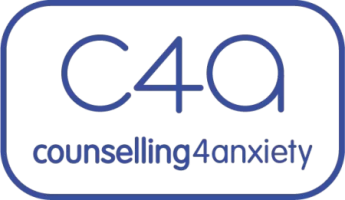Health anxiety, sometimes called illness anxiety disorder or hypochondriasis is more than just the occasional worry about getting sick. For many, it’s a constant hum of fear in the background of daily life. Every sensation in the body becomes a potential sign of something serious. A headache feels like a brain tumour. A flutter in the chest must mean a heart condition. It can be exhausting, overwhelming, and isolating. At the core of the condition is a heightened sense of anxiety allied with a fear of not being able to cope and with catastrophic thinking always being in the background.
If this sounds familiar, please know you are not alone and more importantly, there is support available. Counselling can play a crucial role in helping you find freedom from health anxiety, not just by managing the symptoms, but by understanding and gently unravelling the root of the issue.
Understanding the Root of Health Anxiety
One of the most powerful aspects of counselling is the space it offers to explore where your anxiety stems from. Health anxiety often isn’t just about the body, it is about something deeper. For some, it can be linked to a past experience of illness, either personally or involving a loved one. For others, it might be rooted in a fear of losing control or a generalised sense of vulnerability. Exploring the past can open a window into contextualising the fears and in helping to place them within a specific time context. This can help to slowly minimise the impact of the health anxieties.
In therapy, we gently work together to identify the underlying thoughts, memories, and experiences that may be fuelling your fears. When you begin to understand where your anxiety comes from, it becomes much easier to work with it, rather than feeling like you are constantly battling it.
Learning to Calm the Nervous System
Anxiety is not just a mental experience, it affects the entire body. When we are anxious, the nervous system kicks into a ‘fight’ or ‘flight’ mode. You might notice a racing heart, shortness of breath, nausea, or even dizziness. These sensations can then reinforce the cycle of fear and especially if you are already worried about your health. Counselling with our trained therapists in Counselling4Anxiety will also provide appropriate tools and techniques that you can use to regulate your nervous system. Using these can also provide you with a sense of empowerment.
Counselling therefore helps you break this cycle by introducing simple, effective anxiety-reducing techniques to calm the body and mind.
Breathing exercises are a great place to start. One technique we often use is box breathing: inhale for four counts, hold for four, exhale for four, hold for four. This rhythmic breathing helps regulate your nervous system and sends a message to your brain that you are safe.
Another technique is visualisation. Guided imagery such as imagining a safe, calming place can help shift your focus away from anxious thoughts and reduce physical symptoms of stress. Over time, visualisation becomes a powerful tool you can return to whenever anxiety flares up.
Reframing Thoughts and Building a Healthier Mindset
Health anxiety thrives on what can be called ‘what if’ thinking: What if this headache is something serious? What if the doctor missed something? What if I can’t cope if I do get ill? Underlying this is a sense of vulnerability that feels life threatening or catastrophic.
In therapy, we work on cognitive restructuring, a technique from Cognitive Behavioural Therapy (CBT) that helps you identify and gently challenge these anxious thoughts. We don’t ignore them and we get curious about them. Is this thought based on evidence, or is it anxiety talking? Are there other, more balanced ways of looking at the situation? Is there evidence from your past experiences that can directly challenge the thoughts that make you anxious and which demonstrate that you can cope?
We also explore ways to nurture a more positive inner dialogue. This isn’t about toxic positivity or pretending everything is fine. It’s about developing a more compassionate and realistic way of thinking such as, “I have felt like this before and I got through it. My body is allowed to have sensations. I don’t need to jump to the worst-case scenario.”
This inner dialogue may well be a substantive change to the inner dialogue that underlies health anxiety and which goes something along the lines of, “My heart is racing and am I having a heart attack. I know that I have a problem and will my heart stop because I felt a pain in my chest the other day”. This dialogue does nothing to support inner resilience, and in many instances is not based on fact but on fortune telling allied to catastrophic thinking.
Creating a Toolbox for Daily Life
One of the goals of counselling is to help you build a personalised toolbox of strategies to use in your daily life. Alongside breathing and visualisation techniques, we might look at:
- Grounding exercises to bring you out of your head and into the present moment
- Mindfulness practices to help you observe your thoughts without getting swept away by them
- Journaling to track patterns in your anxiety and celebrate small wins
- Lifestyle tweaks like reducing screen time or caffeine to lower baseline stress levels
These tools not only help reduce anxiety in the moment, they help you build resilience over time. So there are many ways that can open up a path of hope and progress. The first step is to make that call for help and support. We are here to support you.

